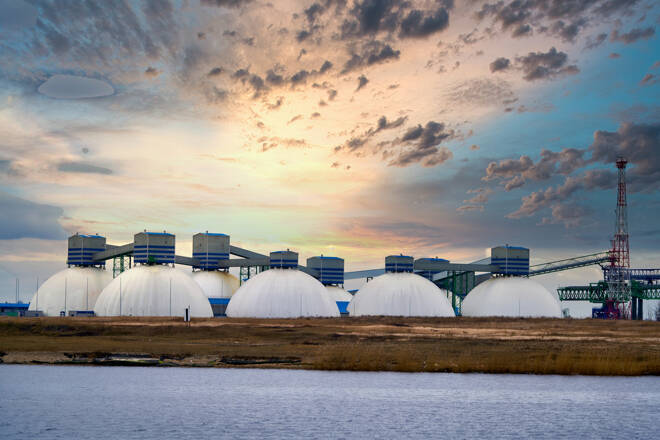Advertisement
Advertisement
NatGas: Wide Range of EIA Estimates Has Traders on Edge
By:
It’s going to be difficult to refill storage if output remains relatively low and heating demand unseasonably strong.
In this article:
U.S. natural gas prices are edging higher on Thursday, continuing to ease through the formerly elusive $7.00 level as traders prepare for the release of the weekly government storage report later in the day.
Traders are looking ahead to a smaller-than-normal increase in storage inventories. Spot gas prices are also strengthening as cold, snowy conditions out West were heading east, according to Natural Gas Intelligence (NGI) price data.
At 12:31 GMT, June natural gas futures are trading $7.205, up $0.109 or +1.54%. On Wednesday, the United States Natural Gas Fund ETF (UNG) settled at $24.61, up $1.21 or +5.17%.
Production Surprisingly Lower for This Time of Year
Futures prices remain strong early Thursday, with production maintaining the soft tone that has been prevalent throughout the week because of various maintenance events that tend to take place during the spring shoulder season.
Waning production is helping to underpin prices which tend to trend lower this time of year because of rising output. This news is helping to make bearish seasonal traders a little nervous. The bears also have been holding out hope for a prolonged period of unsupportive weather to improve supplies, “neither of which have occurred so far this shoulder season,” NatGasWeather said.
Short-Term Weather Outlook
According to NatGasWeather for April 14-20, “Comfortable conditions continue over the southern and eastern U.S. with comfortable highs of 60s to 80s, besides locally hotter 90s in Texas.
A chilly late season weather system with heavy rain and snow will track through the Midwest today with lows of teens to 30s, then spreading across the eastern U.S. Friday through early next week for stronger than normal national demand.”
US Energy Information Administration Weekly Storage Report
According to NGI, after last week’s 33 Bcf pull to close out the withdrawal season, estimates on Wednesday ranged widely from a 5 Bcf injection to a 29 Bcf build.
Reuters polled 13 analysts, whose estimates produced a median increase in inventories of 13 Bcf. A slightly tighter Bloomberg survey showed a median build of 15 Bcf, while the average of a Wall Street Journal poll came in at 12 Bcf.
This compares with a 55 Bcf increase in storage in the same week last year, and a five-year average injection of 33 Bcf.
Daily Forecast
With natural gas trading near a 14-year high and at price levels seldom experienced, it’s difficult to find resistance levels that could stop the rally. Furthermore, all of the key fundamentals are skewed to the bullish side, especially low production.
Prices could start to ease if production ramps up, but it would have to be strong enough to offset the lingering heating demand. According to EBW Analytics Group, the storage week ending the third week of April is now colder than the storage week for the third week of March, with daily heating demand potentially doubling into early next week.
It’s going to be difficult to refill storage if output remains relatively low and heating demand unseasonably strong.
For a look at all of today’s economic events, check out our economic calendar.
About the Author
James Hyerczykauthor
James is a Florida-based technical analyst, market researcher, educator and trader with 35+ years of experience. He is an expert in the area of patterns, price and time analysis as it applies to futures, Forex, and stocks.
Did you find this article useful?
Latest news and analysis
Advertisement
